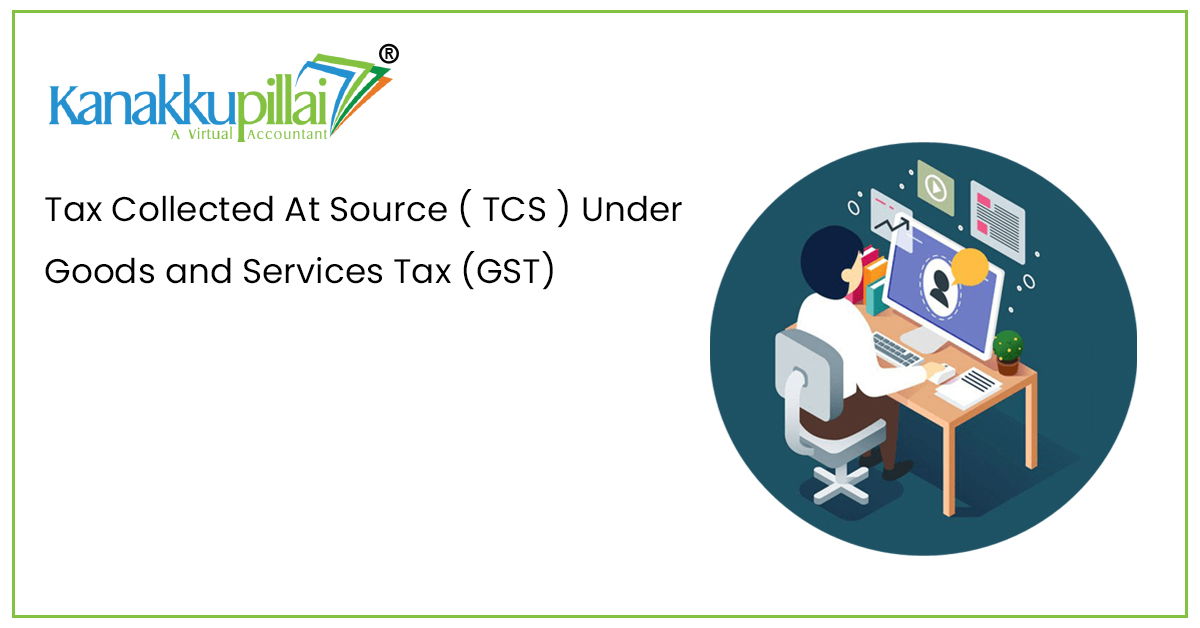GST is paid by consumers but remitted to the government by business entities that supply these goods and services or both. GST is added to the price of the goods or services sold to consumers, and the price for a product that shall be collected will be inclusive of GST.
In India, the GST system was established during the year 2017. the purpose or objective of introducing GST in the country was to remove the cascading effect of taxation or double taxation from the manufacturing level to the consumption level. With the introduction of GST, the final price of the products became low, and small entities were exempted or given the virtue of paying low taxes. It helped reduce the average tax burden on firms and made taxation easy, which boosted foreign investment in the country, generating more employment opportunities.
TCS on GST
TCS in GST means Tax Collected at Source. The e-commerce operator will collect tax at source while making the payment to the supplier on the supply of goods and services or both done by the supplier using the e-commerce platform of the operator. A total of 2% TCS on GST in aggregate shall be collected and this shall be 1% TCS on GST as per CGST and 1% TCS on GST as per SGST, making it to a total of 2% in aggregate.
For example, a supplier named Mr. X sold goods and services through the e-commerce operator Flipkart amounting to INR 60,000 as the net value of the goods supplied. Flipkart while remitting this amount of INR 60,000 to Mr. X, should deduct 2% TCS on such payment which would amount to INR 1200 in total i.e., 600 + 600, and remit the balance of INR 58,800 to the supplier which is Mr. X.
Mechanism of Collecting TCS on GST
Under E-commerce transactions, a seller or supplier will list his or her goods, services, or both for sale on an e-commerce platform, which the buyers would access and place orders as per their needs through the same platform. The e-commerce platform would then collect the payment for the same from the consumers and remit this collected amount to the buyer. Here, the e-commerce platform stands in the middle of the buyer and the seller, helping them meet each other by functioning as a marketplace.
However, there were many tax evasions that were reported in this case as the suppliers were not remitting proper tax amounts on the supply made through the e-commerce platform, which gave the way for introducing TCS on GST. The GST Law and Act thus held the e-commerce operator liable for collecting tax at source from the payment which was made to the supplier for any supply of goods and services or both through the e-commerce platform. Hence, they would now deduct the TCS from the payment before the same is made to the supplier and deposit the same with the government, thereby giving a trail of transactions to the government with regard to any sale or supply that has taken place on the e-commerce platform with regard to the seller.
The government authorities would then compare the data furnished by the e-commerce operator with the data furnished by the supplier so as to take note of discrepancies, if any, with regard to the same.
Depositing the TCS
The e-commerce operator should deposit the collected TCS to the government by the 10th of the succeeding month, during which the payment has been made. They should also file GSTR 8, which is a monthly return by the 10th of the succeeding month, and also submit an Annual GST Return by the 31st of December of the financial year, which is succeeding the financial year for which the payment was made.
Once this GSTR 8 has been filed by the e-commerce operator, the same can be viewed by the suppliers from whom such TCS deduction was made by the e-commerce operators by logging on to www.gst.gov.in and navigating through Form GSTR 2A for such details on TCS deducted. The seller, in turn, can now claim this TCS credit while making a tax payment, which would reduce his or her total tax liability.
Both the e-commerce operator and supplier should acquire registration under GST as per the GST Act, and they shall not be entitled to the threshold exemption available to other suppliers. But in the case of the supply of services which are specified as per section 9(5) of the CGST Act, the supplier can avail of a threshold exemption limit of INR 20,00,000 or INR 10,00,000 (in case of specified states) in aggregate, as the e-commerce operator shall be held liable to pay GST on the same.
Notice served to the E-Commerce Operator
The Deputy Commissioner or anyone with a higher rank can issue a notice to the e-commerce operator asking to furnish details regarding the volume of supply of goods and services or both done by them or the stock or inventory of goods lying in their warehouse or such other matter which such party or the notice service officer shall deem fit or need details regarding.
The operator shall furnish such information within 15 working days, the failure of which shall attract a penalty of up to INR 25,000.
Hence, we can conclude that for bringing in clarity and transparency with regard to the transactions that are taking place on an e-commerce platform, TCS on GST is one major metrics such that there is less or no tax evasion, and the income from such GST earnings will be higher.





